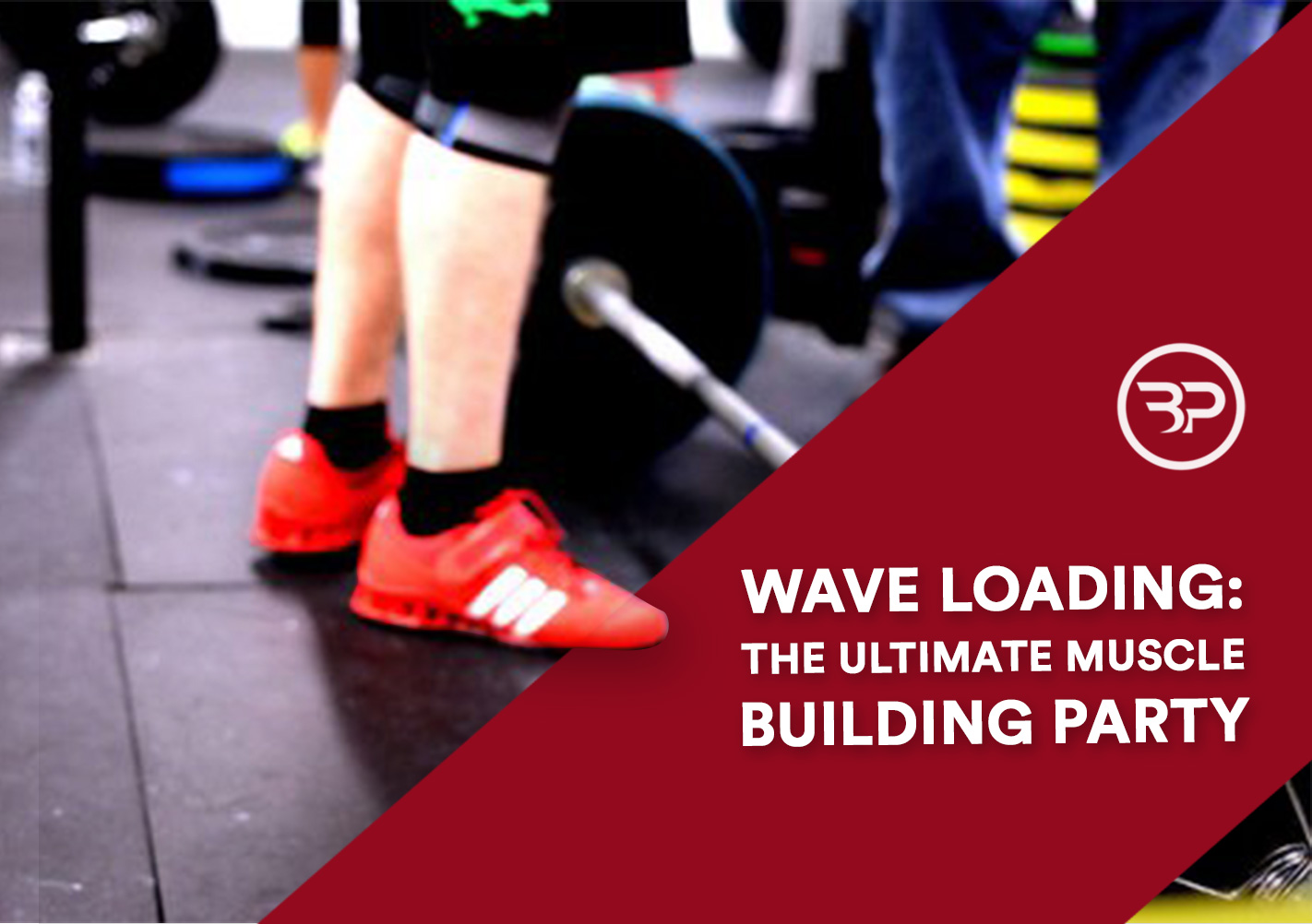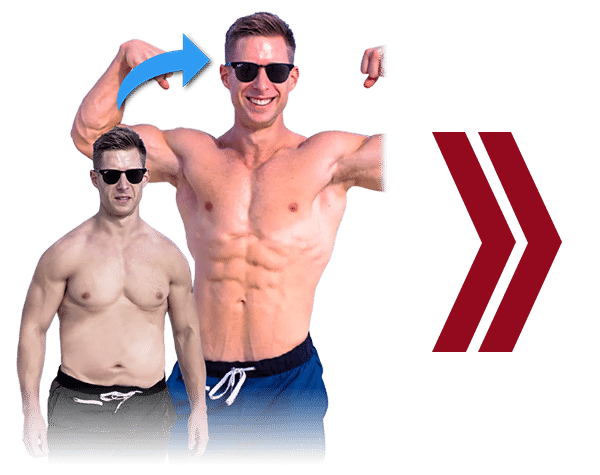Eric Bach here with a guest post by my dude Joseph Brigley. I’ve had the pleasure of shooting the breeze with Joe on everything from advanced training protocols to fantasy football…both sure signs he’ll fit right in at Bach Performance!
Joe is currently pursuing a graduate degree in exercise science while running the Salubrity, his website for living a high-performance lifestyle.
In this post, Joe hits on two of my favorite things: the occasional libation and wave loading, Wave loading is an advanced training protocol to maximize nervous system activation. It helps you build strength and muscle. Over to you, Joe.
I love lifting heavy weights. The cold steel. The grip of fear before a new PR. The wicked burn and pain before an endorphin rush leaves you feeling accomplished.
There’s much to learn about training, and the more years I lift, the more variations I learn to help clients build strength, muscle, and athleticism.
There’s more than 3×8. Or 3×10 and 3×12.
If you’ve been training awhile, your muscles need a jolt, an influx of activation and stress to continue growing.
When you keep doing the same exercises and rep schemes, your nervous system becomes extremely efficient. This means without over-stressing your current abilities, your nervous system needs less recruitment to perform the same lift.
No change. No overload, and no challenge. Essentially there’s no thrill. So why should you adapt?
To make progress, you need overload.
How?
By charging the upstaged potential of your nervous system we’ll prime your body for more strength, and more muscle.
Wave Loading
By coupling max contractions with explosive ones, you’re able to improve power and force development.
Now you’re stoking some excitement and the engines purring “Whoa, whoa, whoa, where did all of this come from?”
This is the equivalent of a new, smoking’ hot girl coming to your buddies’ party. You’ve never seen her before. She’s gorgeous. Instead of checking out the same girls over and over again, she walks in and heads turn. There’s a new energy and a new life to the party.
How Wave Loading Works
Wave loading is the life of the party. Similar to the game of beer pong, or the Football game on in the background maximizing the parties’ energy, wave loading excites your nervous system.
Each wave moves in either ascending or descending fashion to expose your body to heavier weights, shock your system, or potentiation your training.
This excitation activates high threshold motor units (htmu’s), the fast-twitch muscle fibers needed for strength, explosiveness, and muscle building.
I’ll jump into the details soon, but for now, understand this:
When more high-threshold motor units are firing, you’ll recruit more muscles and they’ll contract harder. Because more muscle fibers are potentiated during the wave, you’ll improve your ability to build strength, muscle, and athleticism.
You with me?
Good, stay there. I’ll explain it all soon.
There are two types of waves: descending waves, and ascending waves.
Descending waves follow a descending pattern, meaning they begin with a higher number of reps and decrease throughout the wave while increasing weight.
This brings together neural strength and movement rehearsal, improving your nervous systems firing and grooving the exercise movement.
As a result, your nervous system is primed. More motor units are recruited, enabling you to progressively lift heavier weight.
Ascending waves, as you guessed, move from fewer repetitions to higher repetitions. In this case, the low-rep sets manage fatigue while simultaneously raving your nervous system to lift a higher weight for more reps. This allows you to train with a higher volume with a relatively heavier weight.
Descending (size) wave: 1 x 12, 1 x 9, 1 x 6} Wave #1. Rest 30-60 seconds between sets, then 3-5 minutes for strength, 1-2 minutes for hypertrophy between waves. Increase weight, and move to the next wave.
1 x 12, 1 x 9, 1 x 6} Wave #2
A total of 6 sets that drops 3 repetitions per set (in a wave).
Or, 1×3, 1×2, 1×1.
Ascending (strength) wave: 1 x 2, 1 x 3, 1 x 5} Wave #1 Rest 30-60 seconds between sets, then 3-5 minutes for strength, 1-2 minutes for hypertrophy between waves. Increase weight, and move to the next wave.
1 x 2, 1 x 3, 1 x 5} Wave #2
1 x 2, 1 x 3, 1 x 5} Wave #3
A total of 9 sets, that raise by 1 – 2 repetitions per set (in a wave).
You can mix and match the repetitions pretty much however you like to fit your training goal. Just monitor rep speed and form to ensure the nervous system is recovering between waves.
The Forgotten Benefit of Waves
Waves keep you focused and your mind sharp. By using relatively heavier weights for more reps, you rehearse the exercise and become more efficient at moving the weight. This helps improve neuromuscular patterns and increases.
Basically, you improve your ability to recruit high threshold motor units to maximize training.
Wave Loading Makes the Routine More Intense
Like, a lot more intense.
Just like a night of over-consuming at your bro’s party, an extra “excitation” in your training requires a greater focus on recovery.
Since you’ll be pushing your body to new limits, bringing your nervous system more activation you’ll need to monitor rest, and take your sleep and nutrition seriously.
You’ll be recruiting more HTMU’s, and improving your bodies’ ability to work together.
Additionally, you’ll probably be trying something new, rather than just settling for that same ole’ workout. Wave loading for your big lifts could be just the stimulation your starving muscles have been craving.
Resources
Words By: Joseph Brigley, Quarterback at The Salubrity, balances his days finessing exercise plans and his nights earning a Masters degree.
When everyone wants to “have it all” he creates that rhythm for the overachievers in life underachieving in health and exercise and gets the mirror to smile with self – satisfaction. Stay connected with Joe on his website www.thesalubrity.com and Facebook.










[…] Wave Loading: The Ultimate Muscle Building Party – Joseph Brigley, Bach Performance […]
[…] training is nothing new. It falls under the principles of wave loading which is a fancy way of saying: use one extreme preceded by a similar but different extreme to […]